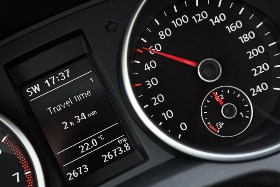 Without a log book for mileage to track business versus personal use, the Canada Revenue Agency (CRA) could deny many tax deductions and claims you have for vehicle usage and result in you paying higher taxes.
Without a log book for mileage to track business versus personal use, the Canada Revenue Agency (CRA) could deny many tax deductions and claims you have for vehicle usage and result in you paying higher taxes.
CRA requires a detailed log book to substantiate the deductibility of vehicle expenses and will often flag vehicle expenses as a target for audit. It will commonly reject all vehicle claims not supported by a log book.
There also have been numerous taxpayer appeals to overturn rejected claims in which the courts found in favour of CRA when a log had not been kept. Farmers and other self-employed business persons, commissioned employees and individuals in many other occupations have all discovered the financial pain of not keeping a km log book.
Simply, the log book has become the “acid test” for determining whether vehicle expense claims are reasonable and therefore legitimate. It is up to the taxpayer to prove that a claim is legitimate.
CRA has also administratively ruled that an employer who provides an employee with a vehicle also is responsible for ensuring the employee keeps an accurate log of how the vehicle was used to determine taxable employment benefits.
A log for each vehicle should include a daily listing of kilometres driven using odometer readings, points of origin and destination for individual trips and a record of the business or personal purpose of the trip. The deductible portion of vehicle expenses will be prorated based on the business use element of the total expenses incurred. Trips between an employee’s residence and place of business are considered personal use.
There are 3 tax cost elements that fit into the claim mix of eligible business expenses for vehicles.
- Capital cost of the vehicle for capital cost allowance (CCA) purposes
- Deductible current or operating costs such as oil, gas, repairs and insurance
- Input tax credit claims (ITCs) for GST/HST purposes (GST/HST rebates for employees and partners).
These items also come into play in the calculations of taxable employee benefits (standby charge and operating benefit) for employer-provided company vehicles.
There are several key business-use percentage thresholds that businesses need to substantiate with a km log for certain types of motor vehicles considered to be automobiles. CRA commonly challenges such claims.
If the business-use cannot be supported or verified, the vehicle will be classified as a passenger vehicle subject to the $30,000 capital cost limit for CCA and GST ITCs, $800 per month leasing costs and $300 per month interest deduction limits.
If the km log supports the thresholds, the vehicle will be classified as a motor vehicle and the above limits will not apply.
The business-use thresholds include:
- 50% for pick-up trucks and vans with three or less passenger seating used to transport goods or equipment; or
- 90% for extended-cab pick-up trucks, vans or SUVs with more than three-passenger seating used to transport goods, equipment or passengers.
Have more questions?
To determine CRA’s classification for extended cab pickups, check out our article When is a truck not a truck?
